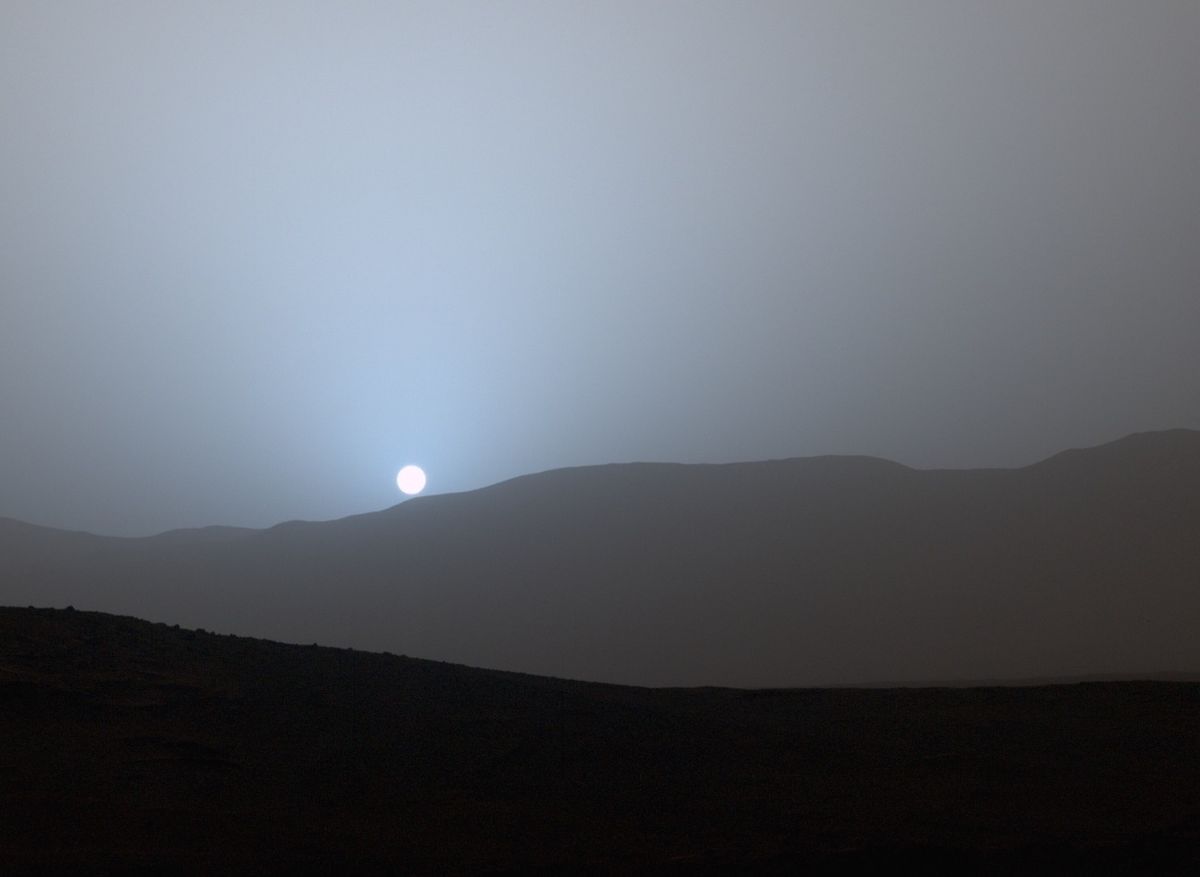
Sunset colors aren't uniform because, in large part, these hues are a product of each planet's atmosphere and how the particles in it scatter sunlight, according to Kurt Ehler, a professor of mathematics at Truckee Community College in Reno, Nevada, and lead author of a 2014 paper in the journal Applied Optics that investigated why the Martian sunset appears blue. .
On Earth, the atmosphere is made up of tiny gas molecules, largely nitrogen and oxygen, which are more effective at scattering — that is absorbing and re-emitting in a different direction — short wavelength light, like blue and violet, than it is longer red wavelengths.
Any planet whose atmosphere is dominated by gas will follow a similar pattern of longer wavelength-colors becoming more dominant at sunset, Ehler said.
On Uranus, for instance, the gas particles of hydrogen, helium and methane in its atmosphere scatter the blue and green shorter wavelengths while absorbing (but largely not re-emiting) longer red wavelengths, according to NASA.
This creates a bright blue sky that turns turquoise at sunset as blue light is scattered away relative to the longer, greenish wavelengths?
In a 2014 study that used data from the Mars rover Spirit, Ehler and his colleagues found that Martian dust scatters light very differently than gas molecules do.
"The reason for [the] blue sunset is the pattern in which light scatters off those [dust] particles," he said.
In contrast, dust scatters light primarily in one direction — the forward direction, Ehler said.
What's more, dust particles scatter red light at much wider angles than blue light does.
When you look at the Martian sunset, you actually see that "the disk of the sun is white, because light doesn't change color as it passes through the Martian atmosphere," Ehler said "Around the sun there’s a bluish glow
If these celestial bodies have a gaseous atmosphere, you’d expect to start seeing longer wavelengths of light at sunset, Ehler said.Â